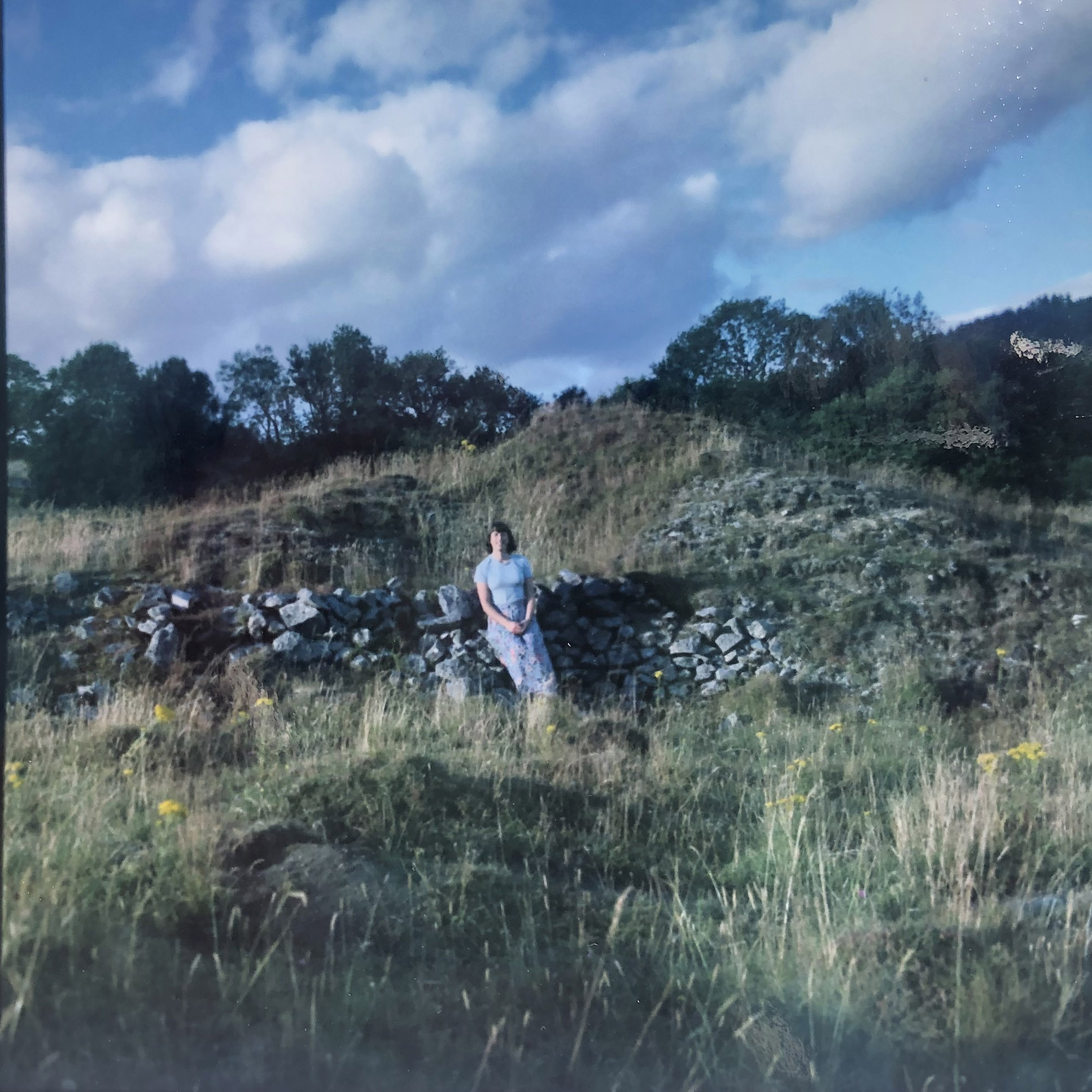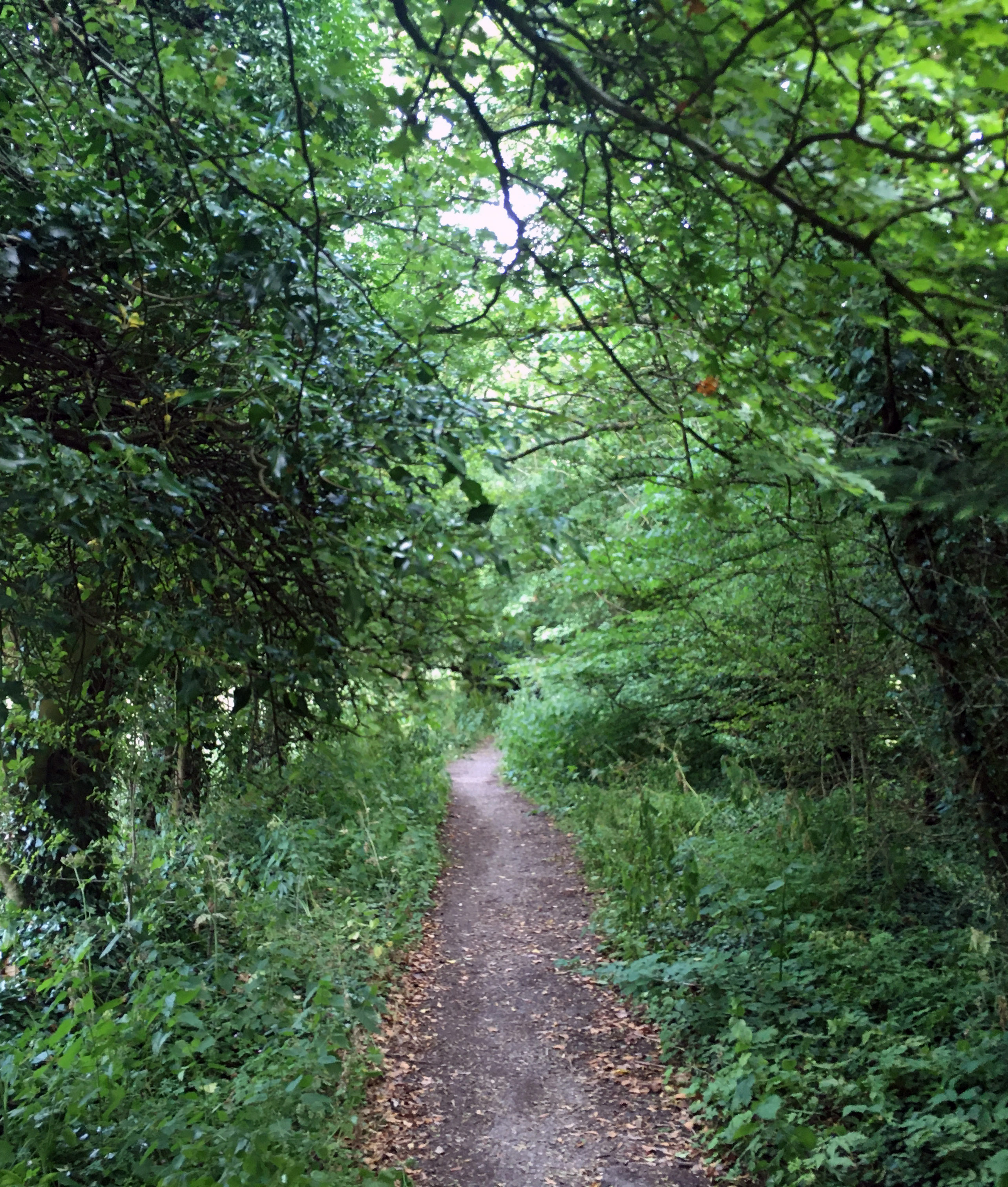'The Scrubland'
An exploration in circuits
Behind the house where I live, there is old industrial land. I call it the scrubland. It's history is a mix of lead mining and limestone quarrying.
It's now mostly overgrown, to varying degrees: birches, willows, hazels; st john's wort, marjoram; nettle and bramble.
I've walked there often in the last couple of years of living here: through the lockdowns, in the snow, in the summer, at dawn, in the evening.
And I got to know it's sounds -- the wind in the trees -- the rusty metal structures -- the birds arguing -- the mine-shaft's echo -- the distant road -- the crickets in summer --
 I've started designing an instrument based on these sounds; based too on the idea of the place. It's going to be a kind of modular synthesiser, in a way, just one with very esoteric 'modules' -- wind -- birds -- steps -- bees -- rust -- and maybe more. I will be documenting this process over the course of this residency, with sounds, images, and video; along with pictures of the finished instrument.
I've started designing an instrument based on these sounds; based too on the idea of the place. It's going to be a kind of modular synthesiser, in a way, just one with very esoteric 'modules' -- wind -- birds -- steps -- bees -- rust -- and maybe more. I will be documenting this process over the course of this residency, with sounds, images, and video; along with pictures of the finished instrument.

Prototyping some of the circuits
For this instrument I am using all analogue circuitry, and trying to keep as many discrete components as possible.
This is for a few reasons:
-- to increase repairability (sustainability)
-- setting myself 'rules' as a challenge to do things differently (creativity)
-- to make it a more unpredictable/chaotic circuit environment (uniqueness).

One componont which I'm using a lot in these circuits is a light-dependent-resistor. This is a resisor which changes value depending on the amount of light that lands on it. My plan is to have a 'light environment' in the middle of the instrument where lights from some circuits can affect other circuits in different ways, along with light from outside environmental sources -- so the instrument might behave differently in the daytime to night, or indoors to outdoors.
In this video the 'random' flashing light is being made by the 'rain' and 'halves' circuits, and the light affects the resistors in the 'birds' circuits. I just love how it looks like a bird parent feeding it's little bird chicks :)
Scribbles to dribbles--
I'm now making up some permament versions of some of these circuits which will sit in the final case, with connections out to various points which the player can interact with, to create different sounds (and different lights - which will affect the sounds!)
I think it's interesting that the project is based on old lead-mining land, and it's lead solder which I'm using to fix all the components into the circuit board. Something cyclic. Galena (lead ore) was also the first discovered semi-conductor and was used in (often home-made) crystal radios througout the first half of the 1900s.
I was originally planning to include a crystal radio 'module' in with this instrument using galena from the site, but for various reasons I couldn't make it happen. Maybe in the future I will add to it!
Parts of the whole --
Introducing the various circuit ‘modules’ which form the finished instrument --
rust - 4 tuned resontant circuits which form a gong. It can be 'struck' by a pulse or 'stroked' by an audio signal (x2)
bees - 6 oscillator drones, or a hive. They all follow the queen. The bees can be made angry or they can be soothed (x2)
ramps - cyclic ramps; they climb until they drop. The speed is controlled by a rider signal - if pushed too much the rider can fall off the bike. (x4)
swings - swinging sines; they swing up, they swing down. Fixed by the length of the rope (x4)
birds - soft sounds that fall between certain frequencies. They see the light and it makes them sing (x4)
wind - the hiss of the leaves in the trees; it also lets in the light and moves around with it (x1)
rain - sometimes it really comes down, sometimes it's just spitting a little (x2)
steps - a left leg and a right leg. One set of steps is for running, the other is for walking (x2)
/2 - a little bit of maths on the journey. Halves the lunch and shares it out (x3)
platform - a place where everything gets sorted, ready for it's onward journey(x1)
rails - stereo output: to headphones or line out
There is also a constellation of lights which are an indicator of some of the signals, and which affect some other signals.
Modules are ‘patched’ together with any small shielded wire or ‘dupont’ connectors in the patch bay at the bottom.
Inputs are arranged to the left, and ouputs to the right. There is a separate row of inputs for the ‘platform’ module (which is essentially a stereo mixer with 15 different fixed-gain / fixed-pan inputs)
Performance on the scrubland instrument at Herrretics gallery, Wirksworth


Documentation of the first performance & the culmination of this project.
As a recording, I love that you can hear the town in it too -- people laughing as they're walking past the door, kids chattering, cars driving up the street. It's kinda fitting to me that the town becomes part of the performance, in a way.
It took a little while for the performance to get going as it took some time to get it patched up, and as I'm not used to playing it I had to refer to the map quite a bit. But I enjoyed this performance, and I was really pleased with how it went.
I will be using the instrument as I'm composing my next album this winter. It's going to be really fun to get to know it's capabilities, and see where I can get to with it.
If you've been following along with this over the last month then thanks for joining me. I've really enjoyed this project, I've definitely pushed myself and I'm so pleased with where I've got to. I hope it's been enjoyable to see things developing.
If you have a desire to hear more of what I'm up to or if you have any questions about my work you can find me on instagram @thesilverfield.
Bye then!
Coral x